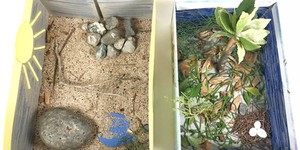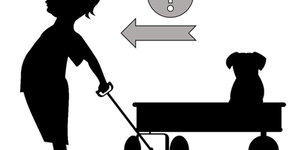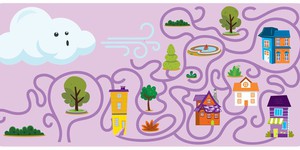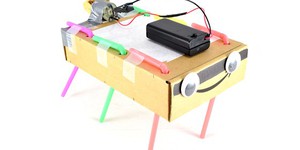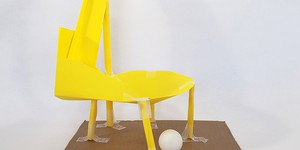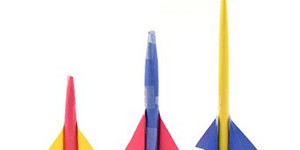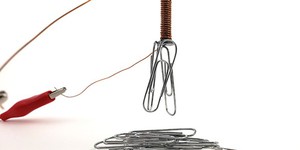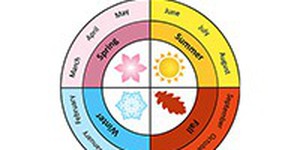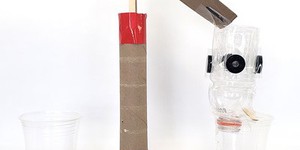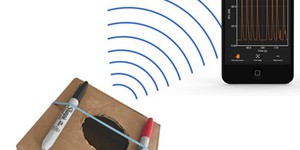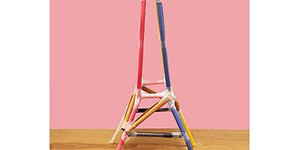Lesson Plans (252 results)
|
Select a resource
Sort by
|
Lesson Plan
Grade: Kindergarten-2nd
9 reviews
Get creative with your students in this hands-on lesson plan! Students will use mostly natural materials to build a shoebox habitat that mimics a real-life habitat for an animal of their choice. As they present their miniature habitats to each other, students realize that not all habitats are suitable for all animals. Each animal species needs the resources of a specific habitat to survive.
Read more
NGSS Performance Expectations:
Lesson Plan
Grade: Kindergarten
12 reviews
Your kindergarten students are used to moving objects. They throw balls, play with toy cars, and sweep the floor, but how much do they think about these actions? In this fun, hands-on lesson, you will use a game (rolling balls) to explore how pushing and pulling affects an object's motion.
This lesson can be expanded with a second lesson exploring how objects can push each other, and how weight influences motion.
Read more
NGSS Performance Expectations:
Featured
Lesson Plan
Grade: 4th-12th
2 reviews
Students will explore the elements by designing a wind maze, a device that can direct the wind along a specific path.
Learning Objectives
Students will:
Design and test a wind maze.
Consider how to direct the wind down an intended path by creating bends in the maze.
Use observations from their tests to compare solutions and iterate on their designs.
NGSS Alignment
This lesson helps students prepare for these Next Generation Science Standards Performance Expectations:
…
Read more
Lesson Plan
Grade: 6th-8th
12 reviews
Junkbots are easy-to-build robots that you can make using a simple circuit and some recyclable materials. In this lesson, your students will learn about engineering design as they compete to build the fastest robot. No previous robotics experience is required!
Read more
NGSS Performance Expectations:
Lesson Plan
Grade: 6th-8th
2 reviews
Add a twist to a classic activity with this fun lesson plan. Your students will design and build a ball run for a ping pong ball using nothing but paper and tape. Their goal is to make the slowest ball run possible. How long can they make it take for the ball to go through their ball run? The 2022 competition is over, but you can see what students built and learn about the winners on the 2022 Engineering Challenge summary page. Teachers, note that
elementary
and
high school
…
Read more
NGSS Performance Expectations:
Lesson Plan
Grade: 6th-8th
37 reviews
Do you need a fun, easy way to teach your students about the scientific method? Try this lesson that uses rockets made from nothing but paper, tape, and straws.
An elementary school version of this lesson plan is also available.
Read more
NGSS Performance Expectations:
Lesson Plan
Grade: 6th-8th
1 review
Making an electromagnet from a battery, nail, and wire is a classic science demonstration. But instead of just demonstrating this for your students, let them explore it themselves! In this lesson they will discover how different variables affect the strength of an electromagnet.
Read more
NGSS Performance Expectations:
Lesson Plan
Grade: Kindergarten
1 review
In this lesson, students will create weather report cards of their birthday seasons and analyze them to identify differences and similarities between them. Based on their observations, they will explain how weather conditions change between seasons and discuss how we adapt to seasonal changes.
Read more
NGSS Performance Expectations:
Lesson Plan
Grade: 6th-8th
9 reviews
In this lesson plan, your students will build their own recycling sorting machines that use various methods, like magnets or puffs of air, to separate shreds of paper from paper clips. This lesson is inspired by the real-world engineering challenge of separating various materials, like paper, plastic, and metals, that get combined in single-stream recycling programs.
Read more
NGSS Performance Expectations:
Lesson Plan
Grade: 6th-8th
We are surrounded by sounds every day, ranging from unpleasant ones like traffic noise to enjoyable ones like music or singing birds. What makes these sounds different? Why are some louder or higher pitched than others? In this lesson plan, your students will investigate how the properties of a sound wave, like frequency and amplitude, affect the sounds we hear. They will do this using a sensor app than can record sound and frequency data with a mobile phone and a homemade musical…
Read more
NGSS Performance Expectations:
Lesson Plan
Grade: 6th-8th
2 reviews
Teach your students about the engineering design process with this fun lesson plan. They will design and build the tallest possible tower using nothing but paper and tape, but there's an additional twist on this classic activity. The tower must support a heavy weight at the top without collapsing! Teachers, note that elementary and high school versions of this lesson plan are also available.
The 2021 Engineering Challenge is over, but you can still try out this fun challenge with your…
Read more
NGSS Performance Expectations:
|

